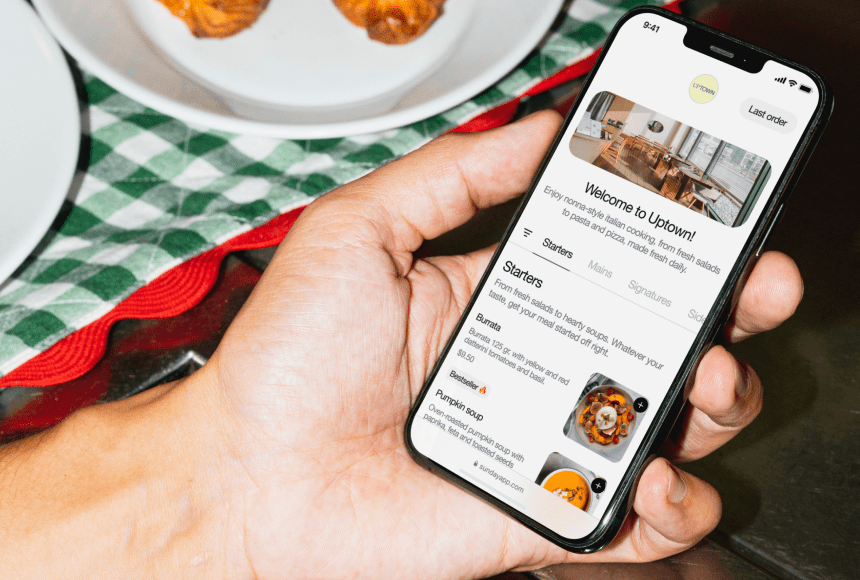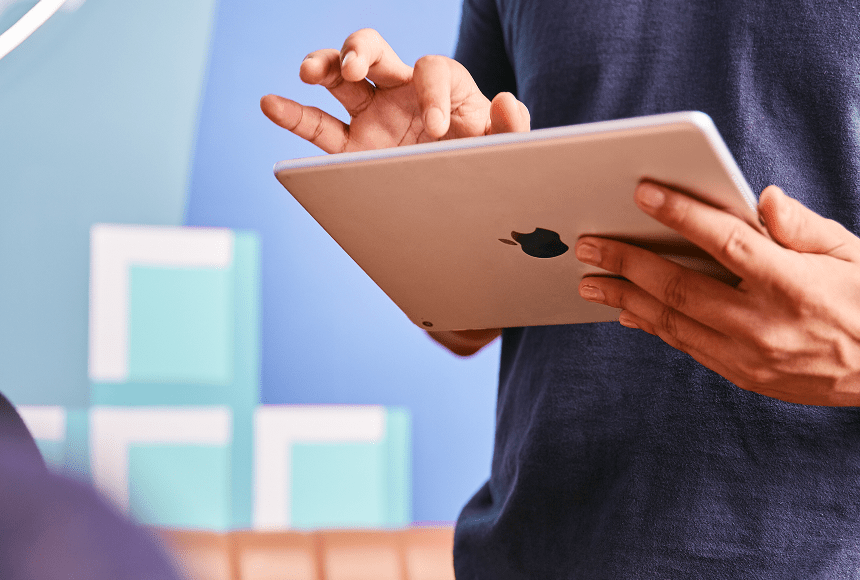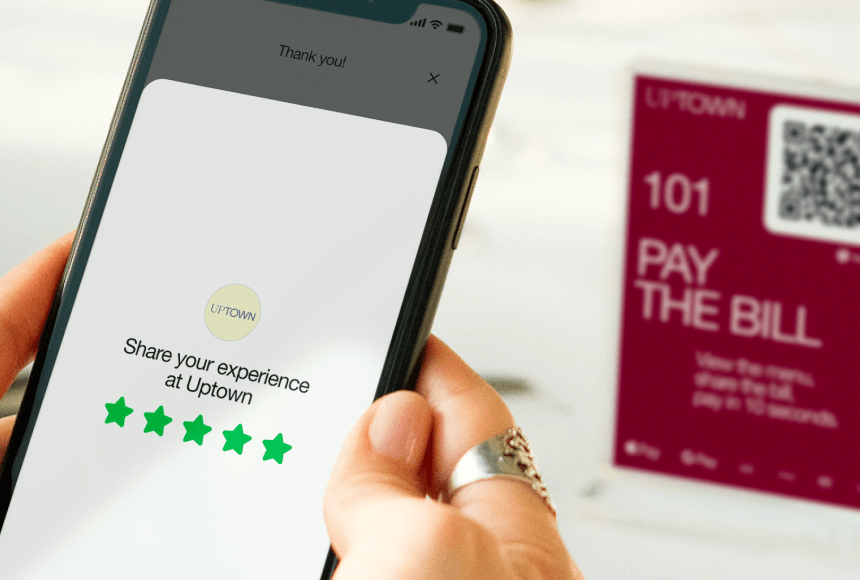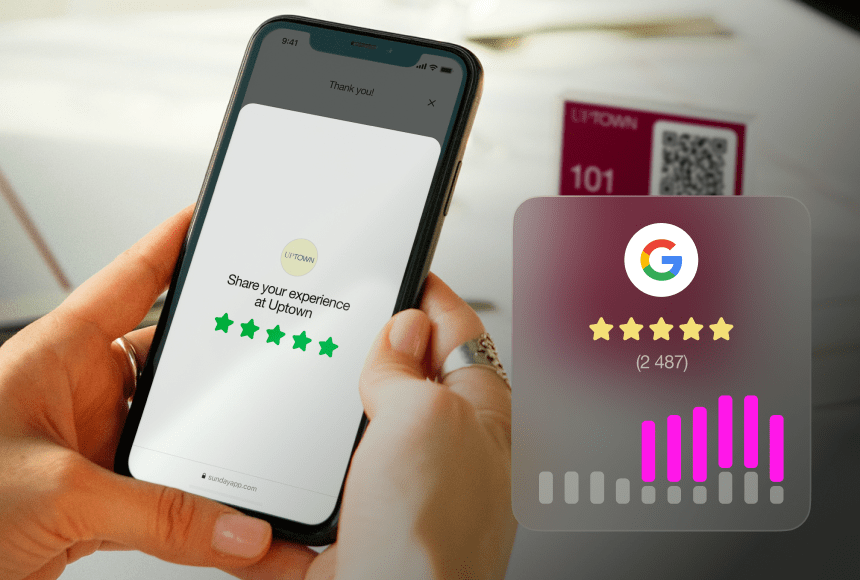
Reimagining the Dining Experience: How QR Code Ordering Will Define 2025
Why QR Code Ordering Is Shaking Up The Restaurant World
Picture this: a guest walks into your restaurant, gets seated, and spots a discreet sign or tabletop card bearing a simple black-and-white pattern—the QR code. Within seconds, scanning that code whisks them away to a digital menu where they can instantly place their order, customize any dish, and pay right from their phone. No server rushing back and forth with a terminal or payment device. No delays while waiting for a paper bill. In an age where efficiency and convenience rule, QR code ordering has gone from a technological novelty to a full-blown revolution in the hospitality industry.
According to the National Restaurant Association’s 2023 State of the Restaurant Industry Report, there has been a substantial increase in consumer preference for digital ordering and contactless payment, with nearly 40% of guests citing speed and convenience as top reasons for favoring these methods. That’s a pretty compelling motivation to get on board if you ask me.
As we approach 2025, it’s becoming increasingly clear that QR code ordering isn’t just a trend. From the way it boosts revenue to how it streamlines workflow, it’s poised to be the new standard across eateries of all shapes and sizes. Let’s dive into the details and see what’s cooking behind this QR-fueled transformation.
The Instant Appeal: Convenience, Speed, and More
Many restaurant owners might recall the early days of “contactless payments” during the global health crisis. People wanted minimal physical touchpoints—meaning fewer items changing hands and less time waiting. The humble QR code filled that gap. Fast-forward to the present, and QR codes are used not just for safety but for creating a seamless dining experience.
We’re seeing restaurants offer:
- Contactless Menus: No more costly printing or reprinting. Edits to menus, daily specials, and quick price adjustments happen in real time via digital platforms.
- Faster Table Turnover: Guests order and pay at their convenience, speeding up service cycles.
- Personal Touch at Scale: Servers are freed up from repetitive tasks—like bringing the check—to focus on personal interactions, upselling, or ensuring diners have a memorable experience.
The shift toward digital ordering empowers customers to browse at their pace and pay whenever they’re ready, avoiding the dreaded wait for the check. For operators, integrating a QR code ordering platform can reduce labor costs while maximizing each server’s potential for engaging with guests.
From Basic to Bespoke: Customizing the Digital Menu
Think of your digital menu as the star of your show. After all, the look and feel of your menu can reflect the personality of your cuisine. When guests scan that QR code, they should be greeted with an interface that mirrors the charm of your physical ambiance.
Here’s a quick recipe for creating a welcoming, user-friendly digital menu:
- Photos That Pop: High-resolution images or short videos spotlight dishes and tempt guests to order more.
- Clear Descriptions: Keep it simple but appealing. Imagine you’re unveiling the dish in front of the diner.
- Allergens and Dietary Needs: Provide easy-to-read icons for gluten-free, vegan, or nut-free items.
- Cross-Selling Opportunities: Offer beverage pairings or appetizer suggestions to nudge diners to try something new.
- Instant Updates: Sold out of the lobster risotto? Remove or mark it as unavailable in real time to avoid disappointment.
The ultimate goal is to replicate the best elements of an in-restaurant experience while simplifying the typical hurdles. Plus, if your digital menu is built for quick updates, you can introduce limited-time specials or highlight seasonal ingredients with minimal fuss.
The Payment Advantage: Moving Beyond Old-School Transactions
Gone are the days when customers had to wait for a server to bring out a bulky payment terminal—or even a card reader—and endure awkward small talk while the transaction processed. With QR code ordering, guests can simply click a “Pay Now” button once they finalize their selections, and they’re done in seconds. In fact, 35% of US diners say they’re more inclined to dine at establishments offering speedy digital payment options, according to an industry survey published in 2022.
What once was standard—using a traditional payment terminal—has been replaced in many modern restaurants by smartphone-based solutions. A technology like sunday can do more than just process the payment; it can also handle tipping prompts, collect reviews (for instance, Google reviews), and handle loyalty incentives. This does wonders to boost engagement and ensure customers walk away feeling in control of their experience.
Even better, digital payment ensures fewer errors and less friction. Customers see exactly what they ordered, can verify their bill instantly, and avoid the dreaded check-splitting headache.
Debunking Common Myths About QR Code Ordering
As with any up-and-coming technology, QR code ordering has its share of skeptics. Let’s address a few of the most common myths:
- “It’s Too Impersonal.” Quite the opposite, actually. By automating routine tasks, QR codes free servers to focus on genuine conversations with guests. Whether it’s selling a particular dish, sharing the history of a signature recipe, or offering wine pairings, your staff will have more bandwidth to add that personal touch.
- “My Customers Aren’t Tech-Savvy.” Most diners in the US own a smartphone and use it daily for a variety of tasks. Even those less familiar with scanning codes generally pick it up quickly once they see how effortless it is.
- “Digital Means Expensive.” Sure, there’s an initial setup cost, but you’re saving on printing menus, possibly reducing labor, and speeding up table turnover. In many cases, the ROI quickly offsets the investment.
- “What About Security?” Reputable QR code ordering platforms comply with secure payment protocols, using encryption and other protective measures to guard against fraud.
Ultimately, implementing QR code ordering is no more complicated than adding an online reservation system or any standard technology upgrade. A user-friendly interface and minimal friction are the keys to ensuring guests—and your staff—adapt quickly.
Strategies for Smooth Implementation
So, you’re thinking of introducing QR code ordering to your establishment. Where do you begin? Consider these steps:
- Evaluate Your Current Workflow: Look at busy periods. Identify bottlenecks. Decide where QR code ordering can help: is it primarily to streamline the ordering process, speed up payment, or both?
- Choose a Trusted Platform: Select a system that integrates with your existing point-of-sale. You’ll save time and minimize disruption if your orders appear seamlessly in your kitchen or bar.
- Menu Optimization: Before uploading your menu, ensure it’s structured and easy to engage with. Do you have photos of all top sellers? Is your copy clear and enticing?
- Train Your Staff: They’ll be the ambassadors of your new system. Make sure everyone from the host to the servers understands how to guide customers, from scanning the code to final payment.
- Promote Guest Adoption: Place prominent signs or table tents that explain how it works. If a customer looks confused, have your staff offer a quick walk-through.
- Collect Feedback and Adjust: In the first few weeks, listen carefully to comments from diners and staff. Tweak your setup based on real-world experience.
This approach might feel like assembling a dish: gather the ingredients, follow the right steps, and taste your creation. If something feels off, add a dash of seasoning—maybe bigger signage or an extra explanation from your server.
Real-World Success Stories
Let’s bring this to life with tangible examples. Although some of us may recall a friend’s restaurant or a local café that introduced QR codes, there are also nationally recognized names and innovative neighborhood spots proving how powerful digital ordering can be.
Take a popular mid-sized bistro in Denver that saw an uptick in daily transactions by almost 20% after adopting mobile ordering. The owner noticed that people were more inclined to add an appetizer or dessert because they could see mouthwatering images right on the digital menu. Tip percentages also climbed—guests found it easy to select a tip suggestion when paying on their smartphone rather than handling cash or scribbling on a paper receipt.
Meanwhile, a family-owned restaurant in Austin discovered that staff morale actually improved because servers spent less time manually inputting orders and more time interacting meaningfully with guests. Even as foot traffic surged on weekends, the dining room felt calm and organized. The streamlined service layout cut down significantly on wait times, which led to enthusiastic online reviews.
These success stories underscore a vital message: QR code ordering can leave a positive salt-and-pepper shake on all aspects of the restaurant experience—operations, revenue, guest satisfaction, and staff well-being.
The Road Ahead: Predictions for 2025 and Beyond
While QR codes became more mainstream in the last few years, the future has even more in store for restaurants that embrace tech-driven initiatives. As we approach 2025, patrons will increasingly expect digital convenience as part of their everyday lives. Some industry experts predict that restaurants without this functionality will risk falling behind the curve, especially as younger, tech-savvy demographics grow into the majority of consumers.
Here’s a taste of where we might be headed:
- Omnichannel Ordering: Customers will seamlessly switch from web ordering at home to scanning QR codes in-store. Unified platforms will track orders and preferences across channels, personalizing experiences from start to finish.
- Enhanced Loyalty Programs: Because everything’s digital, it’s easier to track and reward frequent diners. QR code systems can automatically update points, unlock special promos, and send follow-up surveys without printing membership cards.
- Table-Side Upselling with AI: Imagine scanning a QR code and receiving instantly generated suggestions based on past orders or trending menu items. AI could offer an appetizer automatically or highlight seasonal drinks you’d likely enjoy.
- Holistic Guest Experience: Combine ordering with interactive content—like videos of your chef preparing a dish, or behind-the-scenes stories that foster deeper connections to your brand. The lines between offline and online experiences will blur further.
That said, the technology is only part of the story. The heart of hospitality—warmth, ambiance, and culinary creativity—will remain central. QR code ordering should complement and enhance the dining experience, not overshadow it.
Practical Tips to Boost Engagement and Increase Sales
If you’re already using QR codes or planning to adopt them soon, here are a few ways to spice things up to drive revenue and offer a memorable dining experience:
- Incentivize First-Time Scans: Offer a small bonus (like a free drink upgrade) if they order via QR code for the first time. People love a little novelty, especially if there’s a perk involved.
- Focus on Appealing Visuals: Crisp images and brief descriptions can double or triple interest in certain menu items. Make sure your “hero dishes” shine.
- Prompt for Tips at Just the Right Moment: A gentle nudge after a positive dining experience is more impactful than a blank line on a physical receipt—systems like sunday can help facilitate that process gracefully.
- Incorporate Feedback Loops: As soon as guests wrap up payment, encourage them to leave feedback or even a review on Google. It’s fresh on their minds, and it increases the chance of a positive rating.
- Experiment with Table-Specific Promotions: Display different QR code designs at each table or section. Maybe Table 5 sees a “Staff Pick” side dish at a discount, while Table 12 gets an exclusive dessert. Data gleaned from these micro-promotions can inform broader menu strategies.
These strategies, like well-chosen seasonings, can elevate a standard digital solution into an enticing experience that keeps guests coming back for more.
Streamlining the Back of House
QR code ordering doesn’t just benefit the guest-facing side; it can also work wonders behind the scenes. When orders go straight from the digital platform into the kitchen display system, the margin for error drops dramatically. Your staff sees accurately transcribed orders without having to decipher a server’s handwriting or typed notes. This can be especially crucial during the dinner rush when even the smallest mistakes can cause backups.
Additionally, digitizing orders allows managers to run real-time inventory checks, minimizing the risk of selling out of a special without warning. Analytics tools can deliver valuable insights: how quickly certain items sell, which time of day sees the most traffic, or which menu categories might need a price adjustment. All that data flows seamlessly, helping you keep the back of house efficient and prepared for anything.
Aligning Technology with the Human Touch
Some owners worry that introducing technology might alienate diners who crave personal connections. The key is striking a balance. When QR codes handle the grunt work, your staff can invest more energy in meeting needs that truly require a human touch—welcoming guests, recommending pairings, ensuring dietary requirements are met, and sharing the story behind a particular dish.
A perfect analogy is a sous-chef in the kitchen: they handle the prep, letting the executive chef focus on the artistry of plating and flavor. In the dining room, QR code ordering acts as the sous-chef, giving your servers the time and space to deliver a memorable meal.
Why All This Matters for Small Restaurants
While it’s easy to think of big urban eateries decked out with the latest gadgets, QR code ordering is arguably even more beneficial for smaller restaurants. Limited budgets and smaller teams benefit greatly from streamlined operations. Reduced printing costs, fewer staff hours dedicated to menial tasks, and the ability to handle more customers efficiently can significantly improve margins in smaller venues.
Plus, in a demanding and competitive market, offering convenient digital solutions can help a cozy café or family-run diner stand out. When patrons discover an unexpected level of tech-savvy service in a smaller establishment, it can do wonders for your reputation, especially in the realm of online reviews.
Looking Through the Guest’s Eyes
It’s one thing to implement a system that makes your life easier. But how does it feel for the guest? A frictionless experience encourages repeat visits, better tips for your servers, and enthusiastic word-of-mouth. Put yourself in their shoes:
- Instant Gratification: They scan, they see the menu, they order, they pay. No “check, please!” moments that drag on.
- Transparent Information: They get to see item details and customizations up front—no confusion or miscommunication.
- Control Over the Process: Some customers are shy about asking for modifications or inquiring about pricing. A digital interface can reduce that social friction.
- Swift Feedback Loop: If something’s off, your team can respond quickly—and if all goes well, they’re more likely to leave a shining review.
When everything runs smoothly, it’s like tasting the perfect dish: a harmonious blend of flavors and textures that leave you satisfied—and eager for another visit.
Leveraging Data to Drive Growth
Here’s another advantage that might be music to your ears: the ability to gather data on guest behavior without intruding on their privacy. When customers order via QR code, you can analyze trends—for instance, popular dish combos or peak dining hours. You can find out if certain promotions spark more interest than others. With that data, you can refine menus, adjust staffing, and run targeted marketing campaigns.
Collecting data responsibly and ethically is crucial. Respect your guests’ boundaries and be transparent about any data usage. Consider offering an email subscription opt-in for a loyalty rewards program or special discounts. The key is to provide real benefits in exchange for a customer’s active participation.
Crafting a Memorable Brand Experience with QR Codes
The beauty of QR codes lies not just in convenience but their customizability. If you’d like the QR code to blend with your brand identity, you can incorporate your restaurant’s logo or signature colors into the code’s design. It adds a touch of personality while reinforcing brand recognition.
You could extend that branding further: when a guest clicks on the code, the digital space they enter features the same color schemes, fonts, and imagery as your physical restaurant. It’s about forming a continuous experience from the moment they spot the sign outside to the minute they pay and leave.
Additionally, by prompting them to share user-generated content—like photos of a signature dish—during the ordering process (for example, “Snap a pic of your favorite dish, tag us on social media, and get 10% off next time!”), you transform diners into brand ambassadors.
Preparing for 2025: Action Steps for the Forward-Thinking Restaurateur
If you’re looking at your calendar and realizing 2025 isn’t too far off, don’t sweat it. There’s plenty you can do to gear up:
- Audit Your Current Digital Tools: Do they integrate or conflict? Aim for a cohesive setup that requires minimal manual input from staff.
- Upgrade Your Infrastructure: Ensure you have reliable Wi-Fi, enough tablets for servers (if you use them), and a robust POS that syncs seamlessly with QR ordering.
- Collaborate with Tech Providers: Platforms like sunday offer helpful resources to onboard you quickly and troubleshoot any setup issues.
- Train Continuously: Technology is never a “set and forget” deal. Encourage staff to stay updated on new features and best practices. If your system updates with a new loyalty program feature, have a quick training session that same week.
- Engage Your Community: Ask regulars what they find convenient or confusing. Guest feedback often reveals how to refine your offering.
By systematically taking these steps, you’ll ensure a smooth transition, especially as consumer expectations continue evolving at a rapid pace.
Frequently Asked Questions (FAQ)
How difficult is it to train my staff on QR code ordering?
Most systems are intuitive, featuring step-by-step instructions. A brief training session should be enough for staff to feel confident explaining QR code scanning and the digital payment process to guests.
Do older patrons struggle with QR codes?
While younger demographics may adapt more quickly, most smartphone users of any age can learn to scan a code within minutes. You can always provide printed instructions or have a staff member on hand to offer a quick tutorial if needed.
How can QR code menus help increase my sales?
A well-designed digital menu showcases enticing photos, recommends pairings, and can suggest add-ons or limited-time offers. Guests tend to explore these suggestions, often resulting in higher average ticket sizes.
Is QR code ordering secure for contactless payments?
Reputable providers use encryption and keep up with strict security standards. Make sure that whichever platform you choose integrates securely with your point-of-sale and payment processors.
What if I want to keep some paper menus?
Hybrid approaches can work well. Offer a few printed menus for guests who prefer them, but have QR code ordering ready for those seeking a quick, digital experience. That way, you cater to everyone.
Can QR codes help me gather feedback and reviews?
Absolutely. Many platforms include a feature that nudges customers to leave a rating or review post-payment. Since feedback is immediate, you’re more likely to capture authentic responses.
Do I need high-end hardware to make QR code ordering work?
No specialized hardware is required. You just need a reliable internet connection, a QR code that links to your digital menu, and whichever device you use to monitor incoming orders in your kitchen or bar area.
Will going digital alienate my loyal customers?
Most loyal customers appreciate a streamlined experience. As long as you maintain your restaurant’s personal touch and warmth, adding digital options usually enhances, rather than diminishes, guest loyalty.
How often can I update my QR code menu?
As frequently as you’d like. You can change prices, add new dishes, or remove sold-out items in real time. The QR code itself remains the same, but the linked menu updates on the back end.
Is QR code ordering just a passing fad?
All signs indicate that it’s here to stay. Plenty of establishments have already integrated QR codes as a core part of their service model, and consumer expectations for convenience are only rising. As we move into 2025, this technology is poised to become the new norm.
Find out more today
Drop us your details below and we’ll reach out within the next 24h




